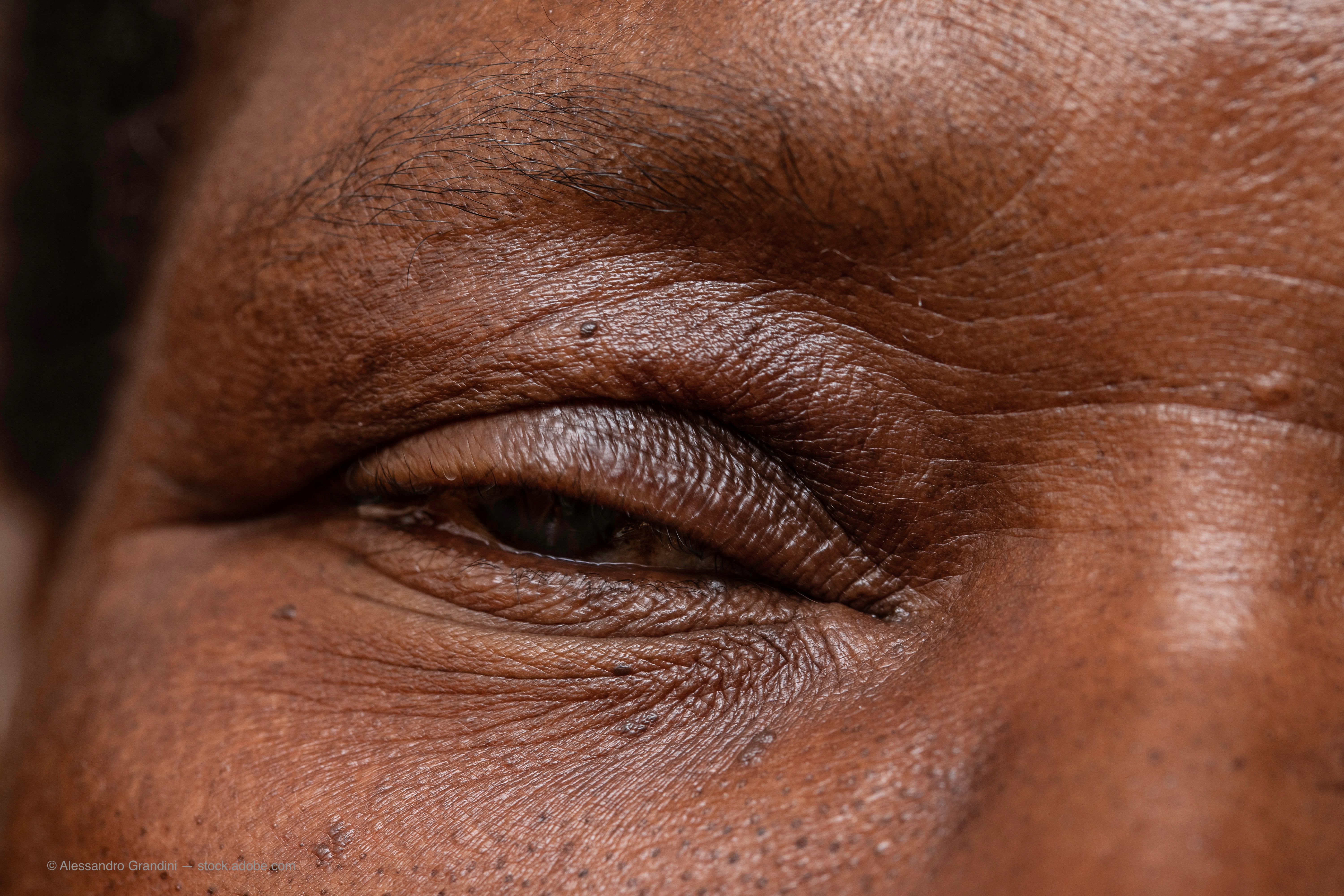Case: treating ptosis from botulinum toxin injection
A 35-year-old woman presents with ptosis of the right eyelid 4 days after undergoing injection of botulinum toxin type A.

Researchers from the Derma Clinic in Riyhad, Saudi Arabia, reported a case of eyelid ptosis of the right eye resulting from botulinum toxin injection (Botox, Allergan). Treatment consisted of application of a glaucoma drug to the eyelid.
Ptosis of the upper eyelid is the most common complaint after botulinum treatment of the glabellar complex.
In these cases, the botulinum toxin diffuses through the orbital septum and affects the upper portion of the eyelid levator muscle.
This generally is treated with α-adrenergic drops, such as 0.5% apraclonidine ophthalmic solution (Iopidine 0.5%, Novartis), that cause Muller’s muscle to contract and the upper eyelid to lift by about 1 to 2 millimeters.
An alternative drug is an α2-adrenergic agent, topical brimonidine tartrate gel (Mirvaso, Galderma Laboratories, LP). This drug is used in dermatology clinics to treat erythematous rosacea because of its potent peripheral vasoconstrictive capability.
Ptosis case
A 35-year-old female patient presented to the authors with ptosis of the right eyelid 4 days after undergoing injection of botulinum toxin type A to treat lines on her glabella and forehead. She reported fatigue and heaviness around the affected eye.
Examination showed that the right iris was covered markedly by the upper portion of the eyelid, and manual lifting of the eyebrow did not relieve this.
Measurement showed that the palpebral fissure was 6 millimeters in the right eye and 10 millimeters in the left eye (normal range, 7-12 millimeters). The marginal reflex distance (MRD1) in the right eye was 2 millimetersand 4 millimeters in the left eye (normal range, 4.0-4.5 millimeters).
The authors reported applying 0.2 mg of 0.33% topical brimonidine gel over the upper portion of the right eyelid. One hour after the application, the eyelid was elevated by 2 millimeters and the effect lasted for up to 2 hours. No adverse effects were noted.
In eye care—ophthalmology, specifically—apraclonidine and brimonidine are used to treat glaucoma patients by lowering the intraocular pressure (IOP).
The authors explained that both drugs increase the outflow of the aqueous humor and decrease aqueous production as the result of vasoconstriction.
“When these treatments are used for glaucoma, eyelid retraction appears as one of the side effects, especially by apraclonidine. Apraclonidine elevates the eyelid by its effect on Müller’s muscle, which is a smooth muscle innervated by sympathetic nerves. Brimonidine eye drops are used in clinical practice to elevate the eyelid if apraclonidine is not available,” the authors stated.
They believe is the first report of the use of topical brimonidine gel for treatment of eyelid ptosis associated with cosmetic use of botulinum toxin.
The authors concluded, “We present brimonidine gel as an adequate option for symptomatic relief following botulinum toxin-induced eyelid ptosis.” However, they added the caveat that no current studies have evaluated the safety of this topical gel on the eyelids.
Reference
1. Atotaibi GF, Alsukait SF, Alsalman HH, et al. Eyelid ptosis following botulinum toxin injection treated with brimonidine 0.33% topical gel. JAAD Case Reports 2022;22:96-8; https://doi.org/10.1016/j.jdcr.2022.01.019
Newsletter
Want more insights like this? Subscribe to Optometry Times and get clinical pearls and practice tips delivered straight to your inbox.